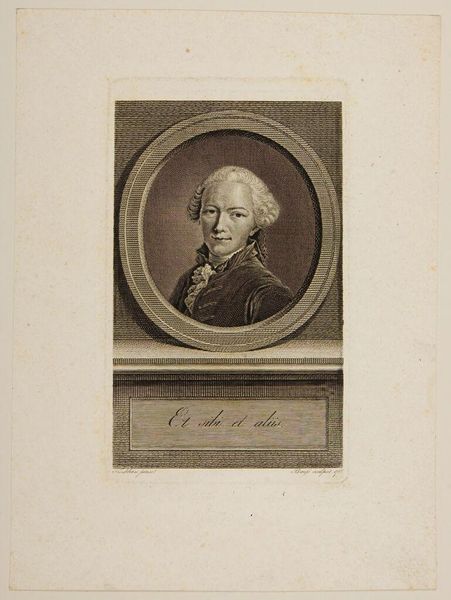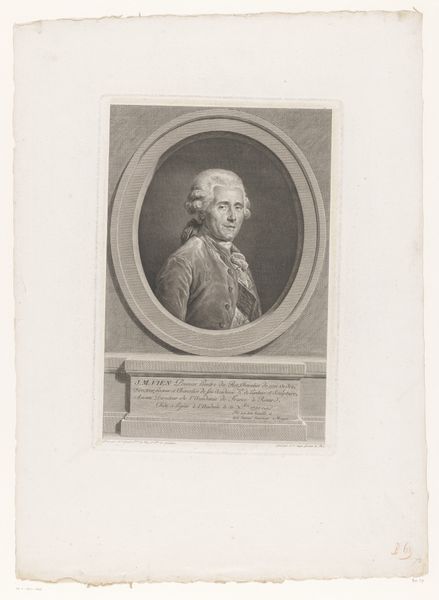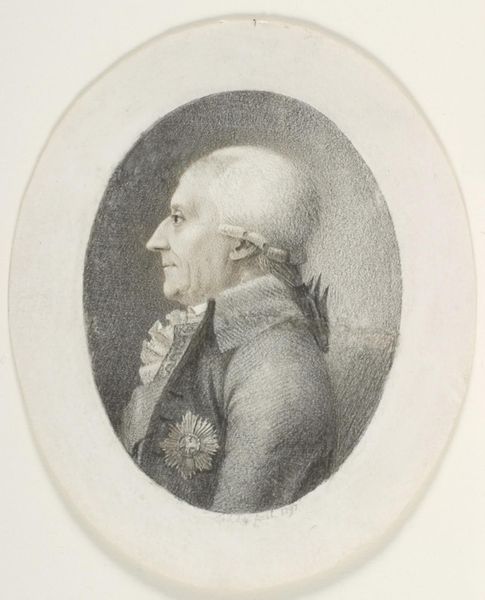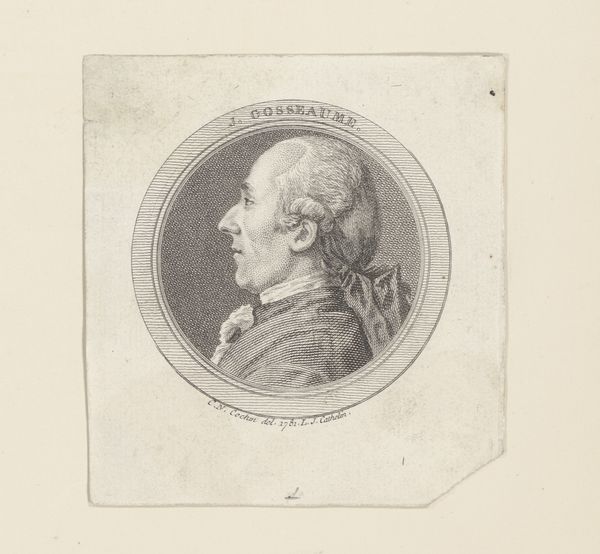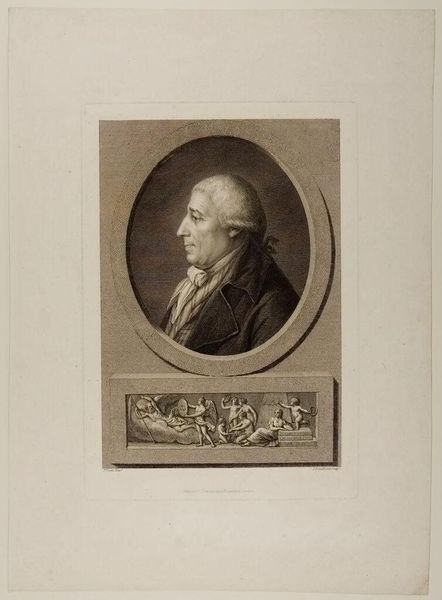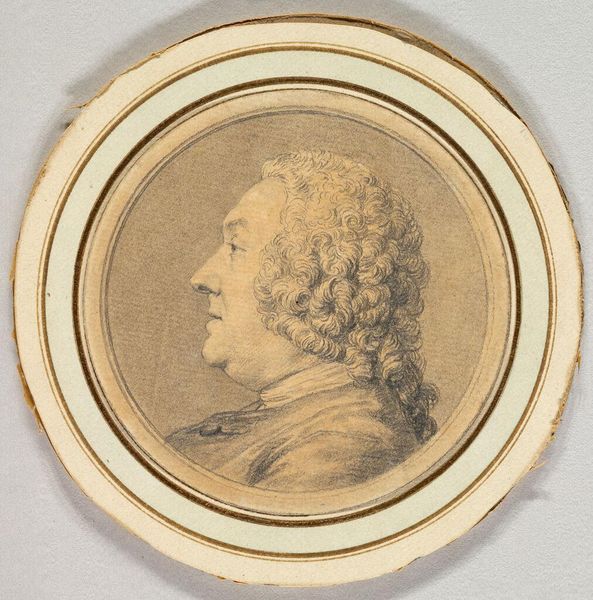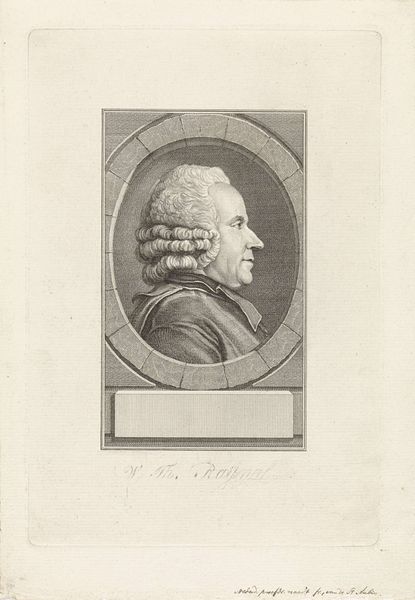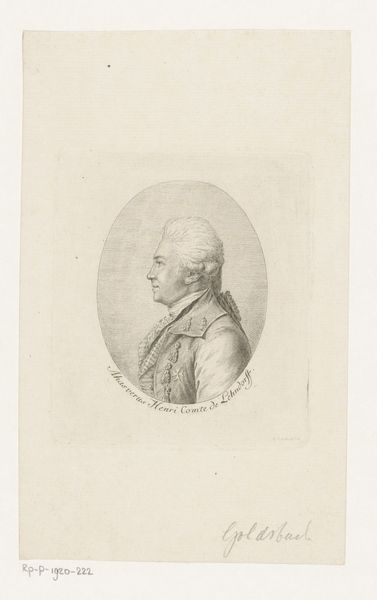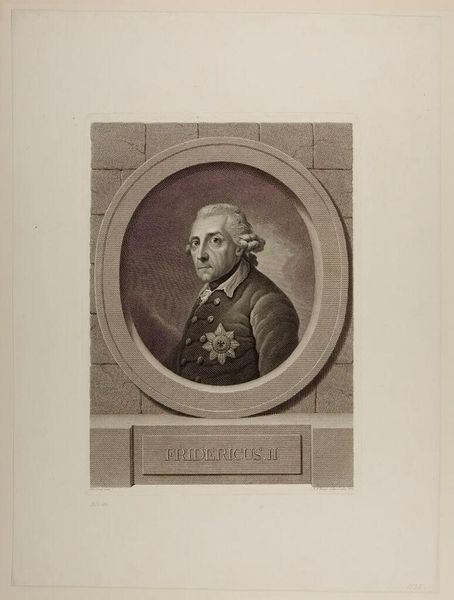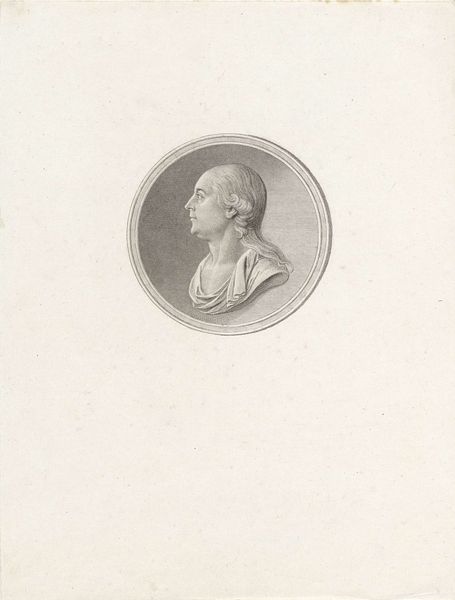
drawing, pencil
#
portrait
#
drawing
#
neoclacissism
#
charcoal drawing
#
charcoal art
#
pencil drawing
#
pencil
Copyright: Public domain
Editor: This is Jean Auguste Dominique Ingres's "Portrait of an unknown, since the bust, left profile" from 1797, created with pencil and charcoal. It's so contained and precise; there's a stillness to the sitter that feels almost… frozen. What do you make of it? Curator: That stillness is key. Profile portraits have long evoked classical coins and medals, referencing the virtues and power of antiquity. Ingres, steeped in Neoclassicism, consciously tapped into that symbolic language. Notice the almost complete absence of emotion. Why do you think that is? Editor: Perhaps it was about elevating the sitter to an ideal, making him less of an individual and more of a representation of virtue, like a Roman senator? Curator: Precisely. The profile view, devoid of direct eye contact, lends itself to that air of detachment and timelessness. It's a strategic removal of personal feeling. Think of the profile as a symbolic mask, concealing more than it reveals. The powdered wig, the precise folds of the cravat – these are all codes of status, designed to project an image of stability and authority in a period of great upheaval following the French Revolution. Editor: So, it’s less about capturing a likeness and more about crafting a symbol? Curator: Indeed. While the skill is undeniable, the goal is to convey an idea, a concept of ideal manhood rooted in a perceived golden age. Look at how even the soft hatching of the charcoal contributes to an overall sense of order. Does knowing this influence your first reaction to the piece? Editor: Definitely. I see now how loaded each detail is, how it works to build this idealized, almost impenetrable, persona. It feels less frozen now and more… constructed. Curator: Yes, the piece continues to reveal hidden symbolic meaning.
Comments
No comments
Be the first to comment and join the conversation on the ultimate creative platform.
